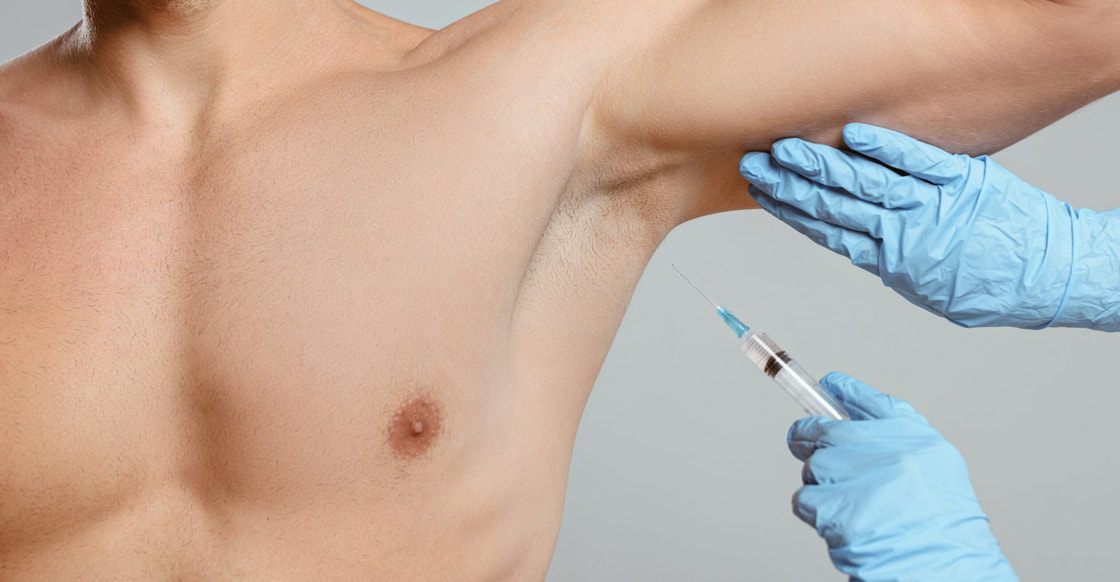Excessive Sweating
Diaphoresis Hyperhidrosis is a medical condition in which a person sweats excessively and unpredictably. People with hyperhidrosis may sweat even in cooler temperatures or when they
are at rest. Causes, incidence, and risk factors: Sweating is an internal response of the body that helps the body stay cool. In most cases, it is perfectly natural. People sweat more in warm temperatures, when they exercise, or in response to situations that make them nervous, angry, embarrassed, or afraid. However, excessive sweating occurs without such triggers. Those with hyperhidrosis appear to have overactive sweat glands. The uncontrollable sweating and perspiration can lead to significant discomfort, both physical and emotional. 
When excessive sweating affects the hands, feet, and armpits, it's called primary or focal hyperhidrosis. Primary hyperhidrosis affects 2 - 3% of the population, yet less than 40% of patients with this condition seek medical advice. In the majority of primary hyperhidrosis cases, no cause can be found. However, it does seem to run in families.
Symptoms: The primary symptom of hyperhidrosis is wetness. Signs and tests: Visible signs of sweating may be noted during a doctor's visit. A number of tests may also be used to diagnose excessive sweating. Tests include:
Treatments may include:
|
Medical Spa Treatments
Acne Acne Scarring B12 Shots Botox Chemical Peels Dermal Fillers Dermaplaning Excessive Sweating Laser Hair Reduction Lip Enhancement Microdermabrasion Microneedling Skin Care Products Skin Rejuvenation Skin Resurfacing Spider Vein Reduction Sun Damage Tattoo Removal Specials Surgical Procedures Arm Lift Body Lift Breast Augmentation Breast Lift Breast Reconstruction Breast Reduction Brow Lift Ear Pinning Earlobe Repair Eyelid Rejuvenation Face Lift Fat Transfer Hand Surgery Hernia Repair Keloid Scar Lip Augmentation Liposuction Male Breast Reduction Mole Removal Mommy Makeover Neck Lift Rhinophyma Scar Revision Skin Cancer Thigh Lift Tummy Tuck Vaginal Rejuvenation |
ORLAND PARK PLASTIC SURGERY
Privacy Policy | Links | Location | Specials
© 2004-2024 Orland Park Plastic Surgery, S.C., all rights reserved • 708.873.9600


